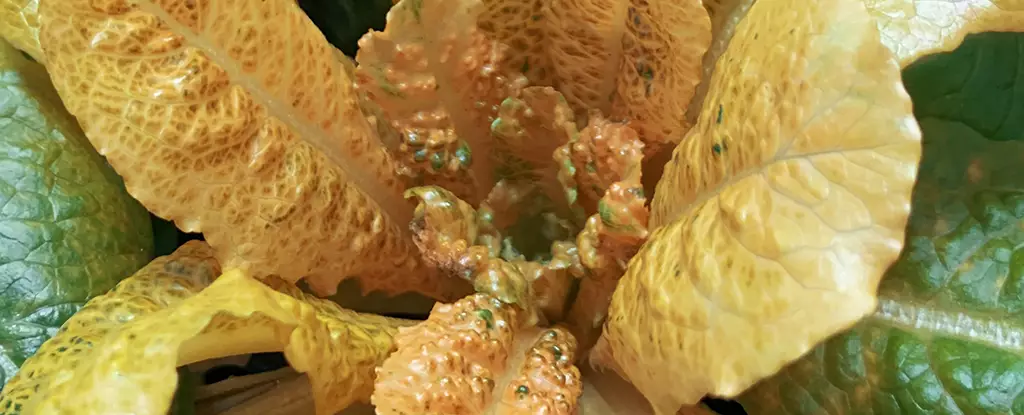In an exciting swing towards revolutionizing plant-based nutrition, researchers at Valencia Polytechnic University (UPV) in Spain have pioneered the genetic engineering of a novel cultivar dubbed ‘golden lettuce.’ This innovative vegetable has been modified to dramatically enhance its beta-carotene content—up to five times the normal amount. As beta-carotene is a precursor to vitamin A, a vital nutrient crucial for immune function, vision, and overall growth, this development could play a transformative role in bolstering diets, particularly in regions plagued by nutritional deficiencies.
The genetic modifications to this lettuce species (Lactuca sativa) represent not just an isolated achievement but a beacon of potential for agricultural science. With over hundreds of millions of people affected by vitamin A deficiency worldwide, the introduction of such nutrient-rich produce could provide a sustainable solution to this pressing public health issue.
The team at UPV, led by molecular biologist Manuel Rodríguez Concepción, faced substantial challenges during the engineering process. Traditionally, carotenoids such as beta-carotene are stored in the chloroplasts of plant cells, structures essential for photosynthesis. Overproduction in these compartments could disrupt the delicate balance vital for the plant’s survival. Thus, the researchers had to employ innovative strategies to increase beta-carotene without undermining the plant’s capability to photosynthesize and thrive.
One of the ingenious techniques involved relocating the accumulation of beta-carotene to the cytosol—the fluid part of the leaf cells—rather than exclusively in the chloroplasts. They accomplished this by introducing a gene from bacteria known as crtB, which facilitated the conversion of certain chloroplasts into chromoplasts. These chromoplasts serve as pigment storage vesicles, allowing for a greater concentration of beta-carotene without harming essential cellular functions.
In an effort to ensure that the increased beta-carotene would be bioavailable and effectively converted into vitamin A once consumed, the researchers utilized high-intensity light treatments to stimulate the formation of plastoglobules—specialized fatty storage units within the lettuce. According to Luca Morelli, another molecular biologist on the team, this enhancement not only increased the quantity of beta-carotene but also improved its bioaccessibility, making it easier to absorb once ingested.
The yellow hue of the ‘golden lettuce’ is a visual indicator of its enhanced nutritional profile, reminiscent of the vibrant colors found in more commonly recognized sources of carotenoids, such as carrots and sweet potatoes. This natural coloring underscores the culturally inherent recognition of nutrient-rich foods, thus potentially increasing consumer acceptance of this genetically modified product.
The implications of creating such a nutrient-dense vegetable extend far beyond just the immediate benefits of the ‘golden lettuce.’ This pioneering framework established by UPV scientists indicates a pathway for not only enhancing other vegetables but also diversifying food sources to combat global malnutrition. As researchers continue to develop methods for bioengineering crops that bolster critical nutrient levels, the capacity to address dietary deficiencies on a broader scale becomes increasingly feasible.
The introduction of golden lettuce could also set a precedent for regulatory and consumer attitudes towards genetically engineered produce, highlighting its potential for positive health interventions. With substantial evidence linking nutritional quality to economic stability and health outcomes, the potential benefits of implementing such technologies could extend to influencing policy and food security initiatives in developing nations.
The development of ‘golden lettuce’ signifies more than a simple advancement in agricultural technique; it embodies a transformative approach to tackling the growing concern over global dietary deficiencies. By leveraging the principles of genetic engineering to amplify the nutritional content of commonly consumed vegetables, science is paving the way for innovative solutions that have the ability to enhance public health on a massive scale. As this field of research flourishes, the hope is for a future where nutrient sufficiency is a reality for all, rendering food insecurity a relic of the past.


Leave a Reply